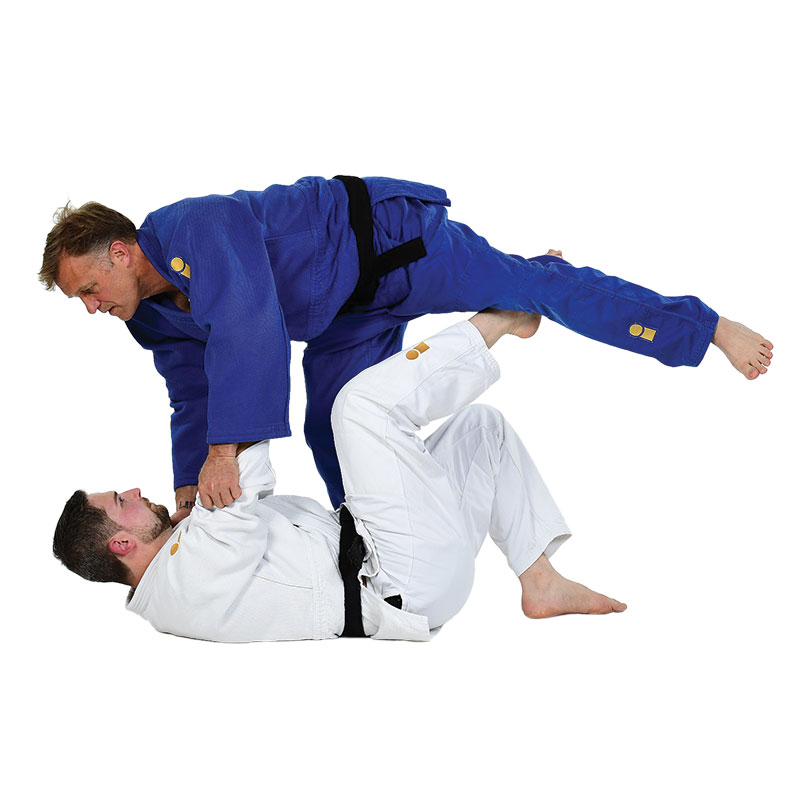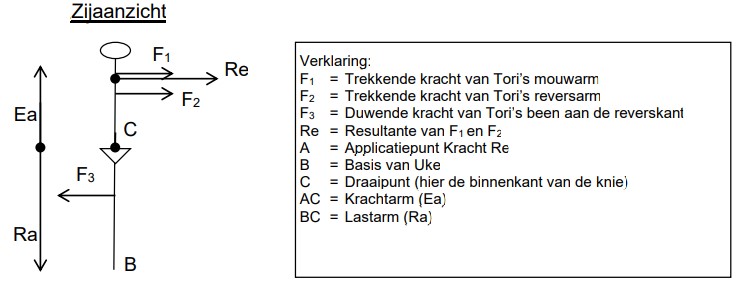Sumi-gaeshi 隅返 (Corner Reversal Throw)
Category: Sacrifice Technique (Ma-sutemi-waza)
Translation: “Corner Reversal”
Description
Sumi-gaeshi is a classical rear sacrifice technique, often used when uke is pushing forward with strong momentum. Tori breaks uke’s balance toward the front or right front corner, then drops backwards while planting the instep of the foot (usually the right) behind uke’s left knee or thigh. Using a coordinated pulling motion of the hands and a lifting action with the leg, tori throws uke in a high arching motion over the head.
It is an effective counter and transition technique, often applied from gripping situations, failed throws, or during grappling sequences such as ne-waza transitions.

Biomechanics of Sumi-gaeshi
-
Type: Couple (Re + F3)
-
Forces:
-
F3: The foot lifts uke’s leg upward and forward.
-
Re: The arms pull uke over the central axis.
-
-
Point of rotation (C): The contact point where tori’s foot meets uke’s leg acts as the lever pivot.
-
As tori falls backward, the combination of the foot lift and hand pull generates a centrifugal force, sending uke in a circular arc over tori’s head.

Did you know?
-
Sumi-gaeshi is considered one of the original 40 Kodokan judo throws and belongs to the fourth group (Dai-Yonkyo) of the Gokyo system.
-
It is also included in several kata such as the Nage-no-Kata, where it serves as an example of ma-sutemi-waza (rear sacrifice).
-
The term “Sumi” (隅) means corner, referring to the diagonal direction of the throw.
-
There exists a Kaeshi-no-Kata, developed around 1992, which focuses on counter techniques (kaeshi-waza). It shares similarities with Go-no-sen-no-Kata, where tori defends against and reverses uke’s initial attack.
-
In traditional judo demonstrations, Sumi-gaeshi is often used as a counter to forward throws, such as Seoi-nage or Tai-otoshi.
Training tip: When learning Sumi-gaeshi, emphasize safe ukemi and control in the throw’s lift and rotation. Coordination and timing are more crucial than brute strength.